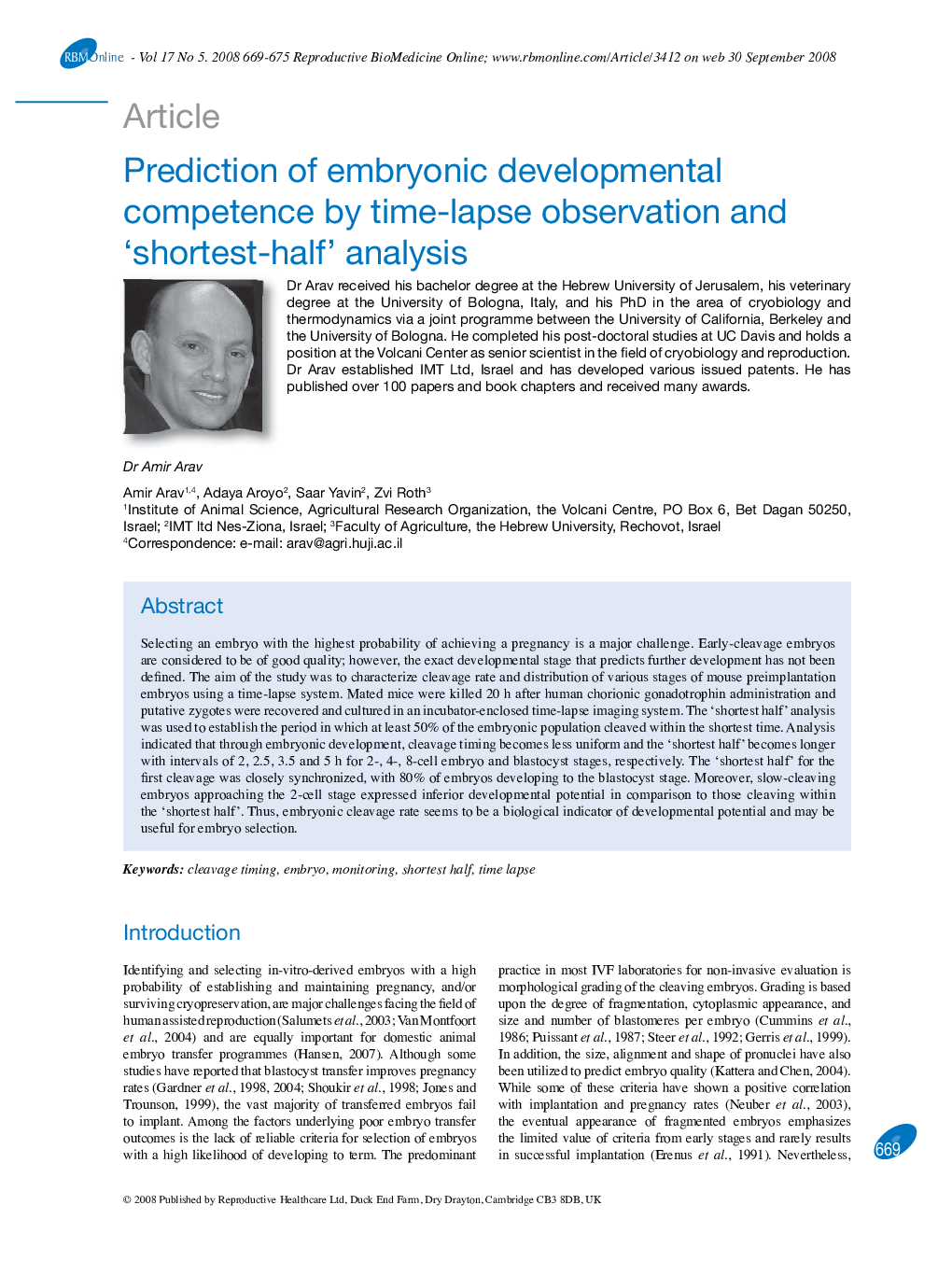| Article ID | Journal | Published Year | Pages | File Type |
|---|---|---|---|---|
| 3972353 | Reproductive BioMedicine Online | 2008 | 7 Pages |
Selecting an embryo with the highest probability of achieving a pregnancy is a major challenge. Early-cleavage embryos are considered to be of good quality; however, the exact developmental stage that predicts further development has not been defined. The aim of the study was to characterize cleavage rate and distribution of various stages of mouse preimplantation embryos using a time-lapse system. Mated mice were killed 20 h after human chorionic gonadotrophin administration and putative zygotes were recovered and cultured in an incubator-enclosed time-lapse imaging system. The ‘shortest half’ analysis was used to establish the period in which at least 50% of the embryonic population cleaved within the shortest time. Analysis indicated that through embryonic development, cleavage timing becomes less uniform and the ‘shortest half’ becomes longer with intervals of 2, 2.5, 3.5 and 5 h for 2-, 4-, 8-cell embryo and blastocyst stages, respectively. The ‘shortest half’ for the first cleavage was closely synchronized, with 80% of embryos developing to the blastocyst stage. Moreover, slow-cleaving embryos approaching the 2-cell stage expressed inferior developmental potential in comparison to those cleaving within the ‘shortest half’. Thus, embryonic cleavage rate seems to be a biological indicator of developmental potential and may be useful for embryo selection.
